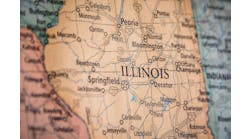Earlier this year, the Office of the National Coordinator determined that incentive payments from CMS for meaningful use of health IT should to be based on reporting specific measures using an EHR. Most of the initial measures suggested were pertinent to primary care practices, and almost immediately specialists of all stripes wanted to know how they were going to qualify for incentives.
On Oct. 27, ONCHIT's HIT Policy Committee held a meeting to discuss that topic. Early on in the general discussion it became obvious that there are lots of thorny issues to work through and little consensus as to how to proceed. It was noted that the objective is to increase the percentage of physicians using health IT to engage their patient population. The question is, if many of the specific measures in the original meaningful use matrix don't apply to specialties such as cardiology or obstetrician-gynecologists, can the committee or CMS find something else that does fill the objective?
Some on the committee said it would be a mistake to go through 60 different specialties determining which things make sense to measure. That's too granular an approach, they argued, and the committee should instead "rise out of the weeds" and look at more general processes of care, such as involvement in registries and e-prescribing.
In written testimony, Albert L. Strunk, JD, MD, deputy executive vice president of the American College of Obstetricians and Gynecologist, agreed. Strunk noted that additional reporting requirements would inhibit, not encourage, EHR adoption in his field. "The measures should determine the extent of EMR adoption and integration into the practice, to meet the goals and objectives that are defined," he stated. "Electronic prescribing and interoperability and the use of clinical decision support are capabilities common across specialties."
While estimating that fewer than 25 percent of ACOG member practices have adopted EHRs, Strunk also noted that ob-gyns would not see much in the way of ARRA incentive funding from CMS. Medicare patients make up only 5 percent to 8 percent of a typical practice. Nor will the Medicaid incentive help much because small practices cannot survive financially if they have a patient mix of 30 percent Medicaid, he added.
Another tough issue to work through is that some physicians play different roles with different patients. Ob-gyns and cardiologists may in fact be playing the role of primary care physician for some of their patients. How can the measures reflect the realities of how medicine is practiced?
It seems to me that CMS is going to have to find a way to reward practices for participating in the flow of health information without certifying the type of EHR for every specialty and micromanaging the thousands of possible measures across so many specialties and subspecialties.

